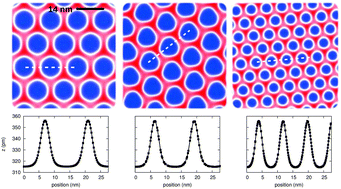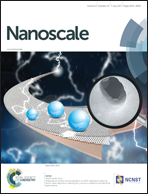Graphene on h-BN: to align or not to align?
Abstract
The contact strength, adhesion and friction, between graphene and an incommensurate crystalline substrate such as h-BN depends on their relative alignment angle θ. The well-established Novaco–McTague (NM) theory predicts for a monolayer graphene on a hard bulk h-BN crystal face a small spontaneous misalignment, here θNM ≃ 0.45 degrees which if realized would be relevant to a host of electronic properties besides the mechanical ones. Because experimental equilibrium is hard to achieve, we inquire theoretically about alignment or misalignment by simulations based on dependable state-of-the-art interatomic force fields. Surprisingly at first, we find compelling evidence for θ = 0, i.e., full energy-driven alignment in the equilibrium state of graphene on h-BN. Two factors drive this deviation from the NM theory. First, graphene is not flat, developing on h-BN a long-wavelength out-of-plane corrugation. Second, h-BN is not hard, releasing its contact stress by planar contractions/expansions that accompany the interface moiré structure. Repeated simulations by artificially forcing graphene to keep flat, and h-BN to keep rigid, indeed yield an equilibrium misalignment similar to θNM as expected. Subsequent sliding simulations show that friction of graphene on h-BN, small and essentially independent of misalignments in the artificial frozen state, strongly increases in the more realistic corrugated, strain-modulated, aligned state.



 Please wait while we load your content...
Please wait while we load your content...